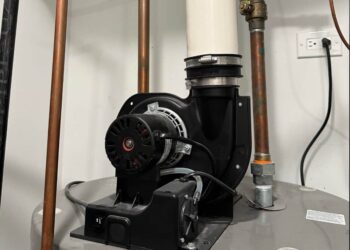Hardwood floors are a coveted feature in homes, celebrated for their beauty, warmth, and durability. When chosen wisely and maintained properly, they can last for decades, enhancing the aesthetics of your space and increasing your home’s value.
This guide dives deep into how to ensure the longevity of your hardwood floors, from selection through to ongoing care and maintenance.
Choosing the Right Hardwood
The journey to long-lasting hardwood floors begins with selecting the right type of wood. The hardness, grain, color, and finish of the wood can all impact not only the look but also the durability of your floors.
Types of Hardwood
There are numerous species of hardwood to choose from, each with unique strengths and aesthetics. For instance, French oak floors are highly sought after due to their robustness and distinctive grain patterns, making them a perfect choice for high-traffic areas and elegant settings alike. Considering the amount of traffic and the type of use your floors will endure is crucial in making an appropriate selection.
Installation Matters
Proper installation is critical to the longevity of your hardwood floors. Even the highest quality wood can suffer if not installed correctly.
Subfloor Preparation
Ensure that the subfloor is clean, level, and dry before installation. Any moisture issues must be addressed beforehand to prevent warping or buckling of the wood.
Professional Installation
While DIY projects can be tempting, professional installation by experienced technicians can make a significant difference in the life of your hardwood floors. Professionals will ensure that the floorboards are properly acclimated, laid, and finished, minimizing gaps, buckling, or other issues.
Routine Care and Maintenance
Regular maintenance can drastically extend the life and beauty of your hardwood floors. Simple daily and weekly practices will protect your investment and keep the floors looking their best.
Daily Dusting and Weekly Cleaning
Dust and dirt can act like sandpaper, wearing down the finish of your floor over time. Use a microfiber mop or cloth to capture dust without scratching the surface. For deeper cleaning, use a hardwood-specific cleaner to remove grime without damaging the wood.
Immediate Spill Cleanup
Water and other liquids are enemies of hardwood. Clean up spills immediately to prevent water damage and staining.
Protecting Your Floors
To maintain the integrity and appearance of your hardwood, taking proactive steps to minimize wear and tear is essential.
Use Rugs and Runners
Place rugs or runners in high-traffic areas, such as hallways and entryways, to minimize wear. Make sure the rugs have a non-abrasive backing to avoid scratching the wood surface.
Furniture Pads
Attach felt pads to the bottoms of furniture legs to prevent scratches and gouges when the furniture is moved or used.
Avoid Hard Shoes and Pet Claws
High heels and pet claws can cause significant damage to hardwood floors. Implement a no-shoe policy in the home and keep pet nails trimmed.
Managing Sunlight Exposure
Prolonged exposure to direct sunlight can cause hardwood floors to fade and even warp over time. Managing how much sunlight your floors are exposed to will help preserve their color and condition.
Window Treatments
Use curtains, blinds, or UV-protective window films to reduce the amount of UV light that reaches your floors.
Rearrange Furniture and Rugs
Periodically rearrange your furniture and rugs to allow the floor to age uniformly and prevent distinct lines from forming where sunlight hits.
Dealing With Scratches and Dents
Despite best efforts, scratches and dents can happen. Knowing how to handle these imperfections can help you manage them without compromising the floor’s overall aesthetics.
Minor Scratches
For superficial scratches, use a wood staining marker or wax crayon that matches your floor’s color to fill and camouflage the scratch.
Deeper Dents and Scratches
For more significant damage, it may be necessary to sand down the affected area and refinish it. In some cases, the affected boards might need to be replaced.
Periodic Refinishing
Over time, even the best-maintained floors will show signs of wear. Refinishing your hardwood floors can restore their original luster and extend their life.
When to Refinish
If your floors start to look dull and cleaning no longer restores their shine, it might be time to consider refinishing. Deep scratches and discoloration are also signs that a floor could benefit from refinishing.
Choosing a Professional
Refinishing hardwood floors can be a complex process that involves sanding down the existing finish and applying new stain and topcoat. A professional will ensure that this is done correctly, dramatically enhancing the look and extending the lifespan of your floors.
Hardwood floors are a significant investment that, with the right care and attention, can last for generations. From selecting the right type of wood, like the durable and beautiful French oak, to implementing routine maintenance and managing wear, every step you take can contribute to the longevity and beauty of your floors. By embracing these tips and techniques, you ensure that your hardwood remains elegant and enduring underfoot.





